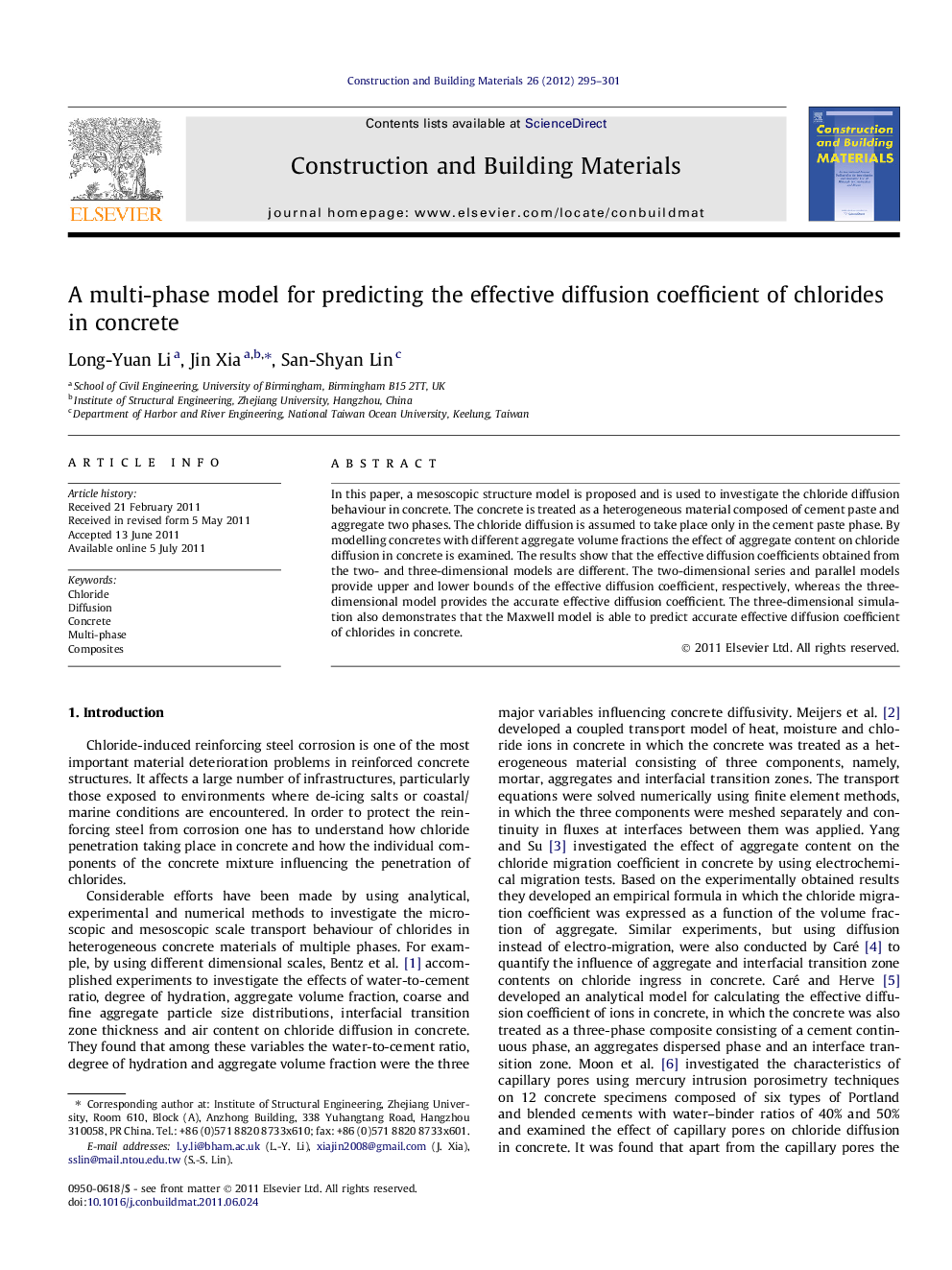| Article ID | Journal | Published Year | Pages | File Type |
|---|---|---|---|---|
| 259157 | Construction and Building Materials | 2012 | 7 Pages |
In this paper, a mesoscopic structure model is proposed and is used to investigate the chloride diffusion behaviour in concrete. The concrete is treated as a heterogeneous material composed of cement paste and aggregate two phases. The chloride diffusion is assumed to take place only in the cement paste phase. By modelling concretes with different aggregate volume fractions the effect of aggregate content on chloride diffusion in concrete is examined. The results show that the effective diffusion coefficients obtained from the two- and three-dimensional models are different. The two-dimensional series and parallel models provide upper and lower bounds of the effective diffusion coefficient, respectively, whereas the three-dimensional model provides the accurate effective diffusion coefficient. The three-dimensional simulation also demonstrates that the Maxwell model is able to predict accurate effective diffusion coefficient of chlorides in concrete.
► Effective diffusion coefficients of two- and three-dimensional models are different. ► Two-dimensional series model provides the upper of effective diffusion coefficient. ► Two-dimensional parallel model provides the lower of effective diffusion coefficient. ► Three-dimensional model provides the accurate effective diffusion coefficient.
